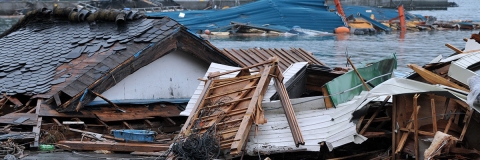
Sidebar navigation
- A generation marked
- A life-saving solution in the palm of your hand
- A new way of understanding the Universe
- A question of science
- Airborne microplastics can be found even in the worlds most remote places
- Algorithms for wind
- Amateur sleuths muscle up the science of discovery
- Are we close to the greatest discovery since penicillin
- Better Public services
- Brexit: Why EU Investment Doesnt Mean A Vote for the EU
- Britains burning question
- Building intelligence into systems allows them to make the right decision
- Call of the Wild
- Can research ethics survive a pandemic
- Children in limbo
- Complementary methods of astronomy help to discover patterns in the Universe
- Computing helps children make sense of the world and helps clinicians save lives
- Control systems are integrating renewable energy with the power grid
- Crime fighters go wild
- Diversity straining on its leash
- Dont stop moving
- Driving us closer to greener transport
- Ecology - a brand new economy
- Float to live
- From rags to environmental riches
- Fukushima
- Gravestones helping preservation
- Growing solutions for greener manufacturing
- Help smokers kick the habit
- How virtual reality could help cut crime
- Independence and violence
- Life saving NEWS
- Messages from time
- Microplastics in our homes
- Model of Light
- New Facial Palsy treatment
- New field of astrophysics is answering questions about the origins of the Universe
- New memory techniques
- New tactic in the battle against breast cancer
- Past mapped for the present
- Space technology helping earthlings to survive
- Taking a closer look at an often misunderstood material
- The Timeline Technique
- The buck stops on a shop shelf near you
- The devils in the details of the deep blue sea
- The world is our oyster
- There is something in the water
- Plumbing new depths of sustainable behaviour
- Quantum physics is powering the new tech revolution
- Revealing the secrets of the start of the Universe
- Shop til you drop
- Showing how a low carbon economy can flourish
- Transparency in global food production
- Understanding people to design better prosthetic hands and arms
- Using maths to help tackle climate change
- Virtual Reality pain management
- What does social media mean for our politics
- Why Game Theory could be the key

How learning from failure can help prevent future man-made disasters
Professor Ashraf Labib's work explores why the Fukushima disaster happened, and the lessons to be learned
In March 2011, a quake-tsunami sent three reactors into meltdown at Fukushima nuclear plant in Japan. More than 150,000 people lost their homes. Towns in the exclusion zone around the plant are still abandoned today. It was the worst nuclear disaster since Chernobyl in 1986.
Overnight, nuclear power's position as a safe alternative to increasingly scarce and expensive fossil fuels was lost. After Fukushima, public confidence in nuclear safety plummeted.
The plant's engineers called it a sotegai – an event 'beyond hypothetical possibility'. But new research from our Professor of Operations and Decision Analysis, Professor Ashraf Labib, shows the opposite. The disaster at Fukushima was preventable.
In both his Fukushima research and his book, Learning from Failures, Professor Labib finds that man-made disasters are often caused by people ignoring simple lessons from past failures.
His research shows that was the case at Fukushima.
The Fukushima meltdown occurred because multiple failures took place at the same time, but the facility failed to address those interdependencies
Professor Ashraf Labib, Professor of Operations and Decision Analysis
The close relationship between Japan’s nuclear industry and regulator meant that adequate risk assessments weren’t completed. Simple equipment and design improvements that could have contained the problem were missing - including a lack of waterproof seals on all control room doors.
A deficiency in forward planning was also at fault. The facility failed to prepare for multiple failures occurring at once, as happened when the quake-tsunami hit. Events that seemed unlikely simply weren't planned for.
‘There was too much belief in the safety of nuclear power in Japan,’ Labib said. ‘The relationship between Japan’s nuclear industry and nuclear regulator caused a conflict of interest in that area. They all believed the plant was more resilient than it really was.
'The Fukushima meltdown occurred because multiple failures took place at the same time. But the facility failed to assess those interdependencies. It lacked the ability to model scenarios where more than one hazard takes place at once.’
Professor Labib's research shows that the correct techniques and models can help develop plans for even the most unlikely events. He also shows how apparently unrelated elements - such as management culture - can play a role in major incidents like Fukushima.
Another reason for man-made disasters is a failure to grasp the true meaning of management concepts like 'Lean Thinking'
Professor Ashraf Labib, Professor of Operations and Decision Analysis
'Another reason for man-made disasters is a failure to grasp the true meaning of management concepts like 'Lean Thinking',’ Professor Labib said. 'Instead of reducing waste while delivering more value, it becomes a way to cut costs. It's then taken too far and that often ends in the sacrifice of safety.’
Six years after the meltdown, a court ruling held Tokyo Electric Power (Tepco) and the Japanese government liable for negligence in Fukushima. The combined failures of Japan’s government and nuclear regulator led to calls for the formation of an independent global nuclear safety commission. The ongoing disaster continues to cast a shadow over the world's nuclear industry.
But as Professor Labib’s research shows, the task ahead for governments is clear. Only by learning from past failures can they revive atomic power and restore public confidence in its safety.
